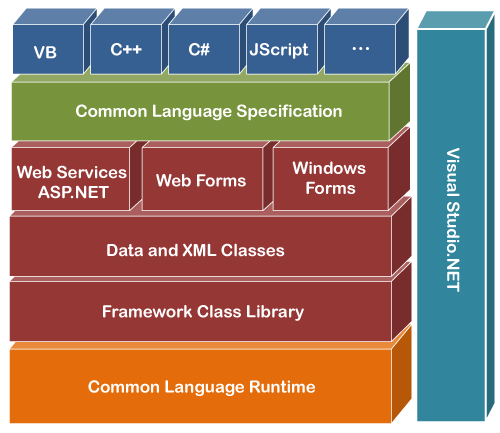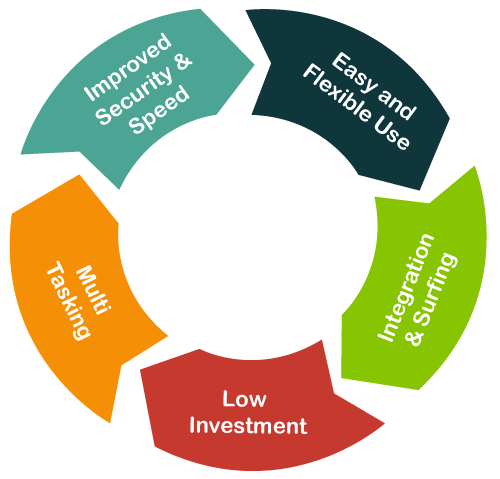Introduction to .NET FrameworkThe .NET Framework is a software development platform that was introduced by Microsoft in the late 1990 under the NGWS. On 13 February 2002, Microsoft launched the first version of the .NET Framework, referred to as the .NET Framework 1.0. In this section, we will understand the .NET Framework, characteristics, components, and its versions. What is .NET FrameworkIt is a virtual machine that provide a common platform to run an application that was built using the different language such as C#, VB.NET, Visual Basic, etc. It is also used to create a form based, console-based, mobile and web-based application or services that are available in Microsoft environment. Furthermore, the .NET framework is a pure object oriented, that similar to the Java language. But it is not a platform independent as the Java. So, its application runs only to the windows platform. The main objective of this framework is to develop an application that can run on the windows platform. The current version of the .Net framework is 4.8. Note: The .NET Framework is not only a language, but it is also a software and language neutral platform.
Components of .NET FrameworkThere are following components of .NET Framework:
CLR (common language runtime) It is an important part of a .NET framework that works like a virtual component of the .NET Framework to executes the different languages program like c#, Visual Basic, etc. A CLR also helps to convert a source code into the byte code, and this byte code is known as CIL (Common Intermediate Language) or MSIL (Microsoft Intermediate Language). After converting into a byte code, a CLR uses a JIT compiler at run time that helps to convert a CIL or MSIL code into the machine or native code. CTS (Common Type System) It specifies a standard that represent what type of data and value can be defined and managed in computer memory at runtime. A CTS ensures that programming data defined in various languages should beinteract with each other to share information. For example, in C# we define data type as int, while in VB.NET we define integer as a data type. BCL (Base Class Library) The base class library has a rich collection of libraries features and functions that help to implement many programming languages in the .NET Framework, such as C #, F #, Visual C ++, and more. Furthermore, BCL divides into two parts:
CLS (Common language Specification) It is a subset of common type system (CTS) that defines a set of rules and regulations which should be followed by every language that comes under the .net framework. In other words, a CLS language should be cross-language integration or interoperability. For example, in C# and VB.NET language, the C# language terminate each statement with semicolon, whereas in VB.NET it is not end with semicolon, and when these statements execute in .NET Framework, it provides a common platform to interact and share information with each other. Microsoft .NET Assemblies A .NET assembly is the main building block of the .NET Framework. It is a small unit of code that contains a logical compiled code in the Common Language infrastructure (CLI), which is used for deployment, security and versioning. It defines in two parts (process) DLL and library (exe) assemblies. When the .NET program is compiled, it generates a metadata with Microsoft Intermediate Language, which is stored in a file called Assembly. FCL (Framework Class Library) It provides the various system functionality in the .NET Framework, that includes classes, interfaces and data types, etc. to create multiple functions and different types of application such as desktop, web, mobile application, etc. In other words, it can be defined as, it provides a base on which various applications, controls and components are built in .NET Framework. Key Components of FCL
Characteristics of .NET Framework
Versions of .NET Framework
Next TopicVB.NET vs Visual Basic
|
 For Videos Join Our Youtube Channel: Join Now
For Videos Join Our Youtube Channel: Join Now
Feedback
- Send your Feedback to [email protected]
Help Others, Please Share









